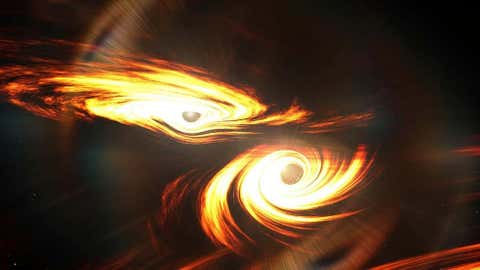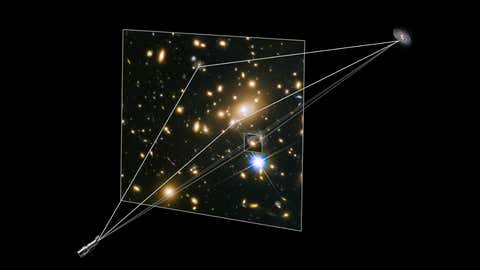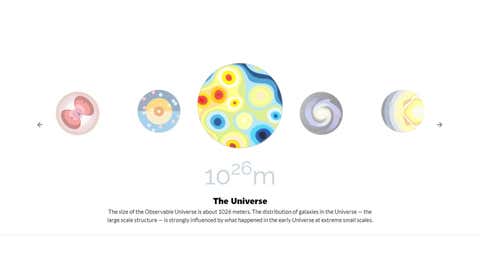In the first and second part of this three-part article series, Dr Parameswaran Ajith demystified gravitational waves and explained how scientists study them. He went on to illustrate how their study can enrich our understanding of the universe. “I think these only show the tip of the iceberg! Gravitational wave detectors are getting better and better and new observatories are being built, including one in India, â€said hopeful Dr Ajith.
At the International Center for Theoretical Sciences (ICTS), Bengaluru, Dr Ajith conducts gravitational wave astronomy activities covering different aspects, from modeling gravitational wave sources to tests of general relativity using observations of gravitational waves. In this third part of the series, Dr. Ajith talks about his research, future possibilities and the upcoming digital exhibition on the cosmos.
You have done important research on gravitational waves resulting from the collision between two black holes. Thank you for detailing your research.

Artist’s impression of the fusion of binary black holes.
(Mark Myers, ARC Center of Excellence for the Discovery of Gravitational Waves (OzGrav))
The best method for detecting gravitational wave signals embedded in data is to correlate the data with theoretical models of the expected signals. For some astronomical phenomena, such as the fusion of two black holes, we can build precise signal models using Einstein’s theory. This requires solving a complex set of equations, called Einstein’s equations. These differential equations are notoriously difficult to solve. When black holes are well separated and move slowly, these equations can be solved approximately.
However, in the final stages of fusion, when black holes move at very high speeds in extreme gravity, we can only solve them by using large supercomputers. This has only become possible in the last decade and is still very computationally expensive. With my colleagues, I found a way to combine rough calculations with supercomputer simulations, producing the millions of theoretical models needed to analyze LIGO data.
Currently our group at ICTS, Bengaluru, is actively involved in different aspects of gravitational wave astronomy. We are working on theoretical signal modeling, analysis and inference of gravitational wave data, and using gravitational wave observations to better understand fundamental physics and astrophysics.
What is this major cosmic riddle that you would like to understand better?

Large galaxy clusters contain both dark matter and normal matter. The immense gravity of all this material distorts the space around the cluster, distorting and amplifying the light from objects behind the cluster. This phenomenon is called the gravitational lens. This sketch shows the light paths of a distant galaxy that is gravitationally lensed by a prominent cluster.
(NASA and ESA)
These days, I am personally excited about a phenomenon called the Gravitational “lens” of gravitational waves. According to Einstein’s theory, a massive object can bend the path of light propagating nearby, just like a standard lens can. This is possible because it curves the space-time through which light propagates.
This phenomenon, called the gravitational lens, was first observed in 1919 and is the first and most famous experimental test of Einstein’s theory. In recent decades, the gravitational lens has become a powerful tool for astronomers and is used to study objects such as dark matter.
It turns out that gravitational waves should be optical in exactly the same way. We still have to watch it. However, there is a real possibility of observing this in the coming years. A century after the first observation of the gravitational lens of light, we are about to detect the gravitational lens of gravitational waves! It is possible that this will become a valuable tool for astronomers in the future. It requires a lot of work on the theoretical and observational aspects.
You and your team have also launched a digital exhibition named Cosmic zoom. Please tell us about it.

Digital Cosmic Zoom exhibition.
(Cosmic zoom)
Cosmic Zoom is part of the ICTS outreach effort. Our original plan was to organize a real exhibit that takes visitors through the various length scales of the Cosmos, from the smallest scales of subatomic particles to the largest scales of the observable universe.
The idea was conceived as part of a “Bengaluru Science Habbaâ€, a science festival organized by a consortium of academic institutions from Bengaluru. This festival having been postponed due to the current pandemic, we have decided to organize a virtual exhibition as a curtain-raiser.
Cosmic Zoom is the work of a team of artists, designers and scientists and is one of the first such initiatives in India. During the inaugural three-week period, we hosted around 20 virtual events covering a range of topics. These included lectures, workshops for children, conversations and book readings that cut across disciplines and target groups. All these events are now archived as part of this exhibition. We believe this will provide an exciting learning experience for visitors.
The interview is part of a series called Ask an astronomer. This series of interviews on gravitational waves is published in three parts, published daily starting July 12.
Here are the last two interviews in this series:
Professor P Ajith demystifies gravitational waves, their origin and importance
Professor P Ajith explains how the study of gravitational waves can enrich our understanding of the universe
**
For updates on weather, space science and COVID-19 on the go, download The weather channel app (on Android and iOS store). It’s free!
 Universo Viviente
Universo Viviente



